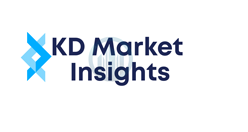Raspberry Hills: Elevating Everyday Essentials with Purpose
In a world where fashion trends change as quickly as the seasons, a new wave of brands is rethinking what it means to dress well. Among them, Raspberry Hills stands out as a label rooted in simplicity, comfort, and enduring style. Rather than chasing the latest fad, Raspberry Hills has built its identity around creating wardrobe essentials that last — pieces that combine timeless design with practical elegance.
A Brand Born from Intentional Design
Raspberry Hills was founded on a simple but powerful idea: clothing should make life easier, not more complicated. The brand’s mission centers on crafting “flexible wardrobe essentials” — garments that move effortlessly through every part of your day. From morning errands to late-night relaxation, each piece is designed to adapt, offering comfort without sacrificing polish.
This philosophy has led to a focused product lineup: hoodies, jackets, shirts, shorts, and sweatpants. Each item is developed to serve a real purpose in everyday life, with consistent attention to quality, fit, and function. The brand believes that a wardrobe doesn’t need to be large to be complete; it just needs to be intentional.
The Core Collection
Hoodies
The hoodie is one of Raspberry Hills’ signature pieces. Designed with premium fabrics and attention to detail, their hoodies combine softness with structure. They’re made to hold their shape while providing the warmth and coziness people expect from a go-to layer. Subtle features — such as ribbed cuffs, durable stitching, and a comfortable fit — make these hoodies ideal for layering or standing alone.
Sweatpants
Raspberry Hills’ sweatpants follow the same philosophy of functional comfort. They strike the right balance between casual ease and refined silhouette, avoiding the overly baggy look common in basic loungewear. Whether worn at home, while traveling, or out for a casual day, these sweatpants retain their form and feel through repeated wears and washes.
Shorts
In warmer weather, Raspberry Hills offers thoughtfully designed shorts made from breathable, high-quality materials. These are not afterthoughts or filler items — they’re made to coordinate effortlessly with the brand’s tops, maintaining consistency in texture, tone, and comfort. The cuts are modern but not trendy, ensuring long-term wearability.
Jackets
Outerwear often defines how we present ourselves, and Raspberry Hills treats this category with particular care. Their jackets are lightweight yet durable, designed for layering over hoodies or shirts without adding bulk. Minimalist detailing, structured lines, and practical elements like secure pockets all reflect the brand’s preference for understated functionality.
Shirts
At the heart of every great wardrobe is the perfect shirt — and Raspberry Hills delivers with designs that emphasize both comfort and construction. Using breathable, resilient fabrics, their shirts maintain shape and softness over time. They’re versatile enough for professional, casual, or relaxed settings, embodying the brand’s belief that true style lies in simplicity.
The Raspberry Hills Philosophy
What truly sets Raspberry Hills apart is not just what it makes, but how it thinks about clothing.
1. Cohesive Wardrobe Building
Every product is designed to complement the others. This means customers can easily mix and match across the line without worrying about mismatched colors, fabrics, or fits. The result is a capsule-style wardrobe where every piece has a place and purpose.
2. Quality Over Quantity
Raspberry Hills takes a “fabric-first” approach to design. Each garment begins with a focus on material — its texture, durability, and sustainability. The brand favors fabrics that maintain integrity through time, washes, and movement. The goal is longevity, not disposability.
https://raspberryhills.net
In a world where fashion trends change as quickly as the seasons, a new wave of brands is rethinking what it means to dress well. Among them, Raspberry Hills stands out as a label rooted in simplicity, comfort, and enduring style. Rather than chasing the latest fad, Raspberry Hills has built its identity around creating wardrobe essentials that last — pieces that combine timeless design with practical elegance.
A Brand Born from Intentional Design
Raspberry Hills was founded on a simple but powerful idea: clothing should make life easier, not more complicated. The brand’s mission centers on crafting “flexible wardrobe essentials” — garments that move effortlessly through every part of your day. From morning errands to late-night relaxation, each piece is designed to adapt, offering comfort without sacrificing polish.
This philosophy has led to a focused product lineup: hoodies, jackets, shirts, shorts, and sweatpants. Each item is developed to serve a real purpose in everyday life, with consistent attention to quality, fit, and function. The brand believes that a wardrobe doesn’t need to be large to be complete; it just needs to be intentional.
The Core Collection
Hoodies
The hoodie is one of Raspberry Hills’ signature pieces. Designed with premium fabrics and attention to detail, their hoodies combine softness with structure. They’re made to hold their shape while providing the warmth and coziness people expect from a go-to layer. Subtle features — such as ribbed cuffs, durable stitching, and a comfortable fit — make these hoodies ideal for layering or standing alone.
Sweatpants
Raspberry Hills’ sweatpants follow the same philosophy of functional comfort. They strike the right balance between casual ease and refined silhouette, avoiding the overly baggy look common in basic loungewear. Whether worn at home, while traveling, or out for a casual day, these sweatpants retain their form and feel through repeated wears and washes.
Shorts
In warmer weather, Raspberry Hills offers thoughtfully designed shorts made from breathable, high-quality materials. These are not afterthoughts or filler items — they’re made to coordinate effortlessly with the brand’s tops, maintaining consistency in texture, tone, and comfort. The cuts are modern but not trendy, ensuring long-term wearability.
Jackets
Outerwear often defines how we present ourselves, and Raspberry Hills treats this category with particular care. Their jackets are lightweight yet durable, designed for layering over hoodies or shirts without adding bulk. Minimalist detailing, structured lines, and practical elements like secure pockets all reflect the brand’s preference for understated functionality.
Shirts
At the heart of every great wardrobe is the perfect shirt — and Raspberry Hills delivers with designs that emphasize both comfort and construction. Using breathable, resilient fabrics, their shirts maintain shape and softness over time. They’re versatile enough for professional, casual, or relaxed settings, embodying the brand’s belief that true style lies in simplicity.
The Raspberry Hills Philosophy
What truly sets Raspberry Hills apart is not just what it makes, but how it thinks about clothing.
1. Cohesive Wardrobe Building
Every product is designed to complement the others. This means customers can easily mix and match across the line without worrying about mismatched colors, fabrics, or fits. The result is a capsule-style wardrobe where every piece has a place and purpose.
2. Quality Over Quantity
Raspberry Hills takes a “fabric-first” approach to design. Each garment begins with a focus on material — its texture, durability, and sustainability. The brand favors fabrics that maintain integrity through time, washes, and movement. The goal is longevity, not disposability.
https://raspberryhills.net
Raspberry Hills: Elevating Everyday Essentials with Purpose
In a world where fashion trends change as quickly as the seasons, a new wave of brands is rethinking what it means to dress well. Among them, Raspberry Hills stands out as a label rooted in simplicity, comfort, and enduring style. Rather than chasing the latest fad, Raspberry Hills has built its identity around creating wardrobe essentials that last — pieces that combine timeless design with practical elegance.
A Brand Born from Intentional Design
Raspberry Hills was founded on a simple but powerful idea: clothing should make life easier, not more complicated. The brand’s mission centers on crafting “flexible wardrobe essentials” — garments that move effortlessly through every part of your day. From morning errands to late-night relaxation, each piece is designed to adapt, offering comfort without sacrificing polish.
This philosophy has led to a focused product lineup: hoodies, jackets, shirts, shorts, and sweatpants. Each item is developed to serve a real purpose in everyday life, with consistent attention to quality, fit, and function. The brand believes that a wardrobe doesn’t need to be large to be complete; it just needs to be intentional.
The Core Collection
Hoodies
The hoodie is one of Raspberry Hills’ signature pieces. Designed with premium fabrics and attention to detail, their hoodies combine softness with structure. They’re made to hold their shape while providing the warmth and coziness people expect from a go-to layer. Subtle features — such as ribbed cuffs, durable stitching, and a comfortable fit — make these hoodies ideal for layering or standing alone.
Sweatpants
Raspberry Hills’ sweatpants follow the same philosophy of functional comfort. They strike the right balance between casual ease and refined silhouette, avoiding the overly baggy look common in basic loungewear. Whether worn at home, while traveling, or out for a casual day, these sweatpants retain their form and feel through repeated wears and washes.
Shorts
In warmer weather, Raspberry Hills offers thoughtfully designed shorts made from breathable, high-quality materials. These are not afterthoughts or filler items — they’re made to coordinate effortlessly with the brand’s tops, maintaining consistency in texture, tone, and comfort. The cuts are modern but not trendy, ensuring long-term wearability.
Jackets
Outerwear often defines how we present ourselves, and Raspberry Hills treats this category with particular care. Their jackets are lightweight yet durable, designed for layering over hoodies or shirts without adding bulk. Minimalist detailing, structured lines, and practical elements like secure pockets all reflect the brand’s preference for understated functionality.
Shirts
At the heart of every great wardrobe is the perfect shirt — and Raspberry Hills delivers with designs that emphasize both comfort and construction. Using breathable, resilient fabrics, their shirts maintain shape and softness over time. They’re versatile enough for professional, casual, or relaxed settings, embodying the brand’s belief that true style lies in simplicity.
The Raspberry Hills Philosophy
What truly sets Raspberry Hills apart is not just what it makes, but how it thinks about clothing.
1. Cohesive Wardrobe Building
Every product is designed to complement the others. This means customers can easily mix and match across the line without worrying about mismatched colors, fabrics, or fits. The result is a capsule-style wardrobe where every piece has a place and purpose.
2. Quality Over Quantity
Raspberry Hills takes a “fabric-first” approach to design. Each garment begins with a focus on material — its texture, durability, and sustainability. The brand favors fabrics that maintain integrity through time, washes, and movement. The goal is longevity, not disposability.
https://raspberryhills.net
0 Commenti
0 condivisioni





